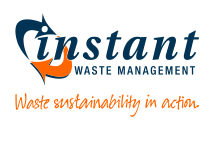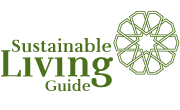Reuse, recycle or dispose?
Increasingly, there are incentives across the sector to encourage reuse and recycling. Landfill costs for C&D waste disposal can be significant, impacting on the ROI for developers and encouraging reuse and recycling. Public pressure towards greener solutions directly affect the costs, rules and regulations involved in C&D waste. Within this framework there are also opportunities to save money, stimulate new sectors within the industry, and develop cleaner and more effective construction solutions.
As the industry is constantly evolving, so too should your waste disposal practices. With a bit of planning you can avoid fines, discover cheaper alternatives to current disposal practices, and promote your business through environmentally friendly practices.
Below we have outlined a comprehensive list of waste materials and how they should be disposed. We’ve also included tools for discovering the best sources for disposal, a list of commercial operators, and advocacy groups that can provide further information on your specific business case.
What materials can be recycled?
The National Waste Report 2010 defines construction and demolition waste as:
... waste produced by demolition and building activities, including road and rail construction and maintenance and excavation of land associated with construction activities. The C&D waste stream usually covers only some of the generation, disposal and recycling of C&D wastes, as these materials can also be found in the Municipal Solid Waste (MSW) and Commercial and Industrial (C&I) streams, or as hazardous wastes.
According to a report commissioned by the Australian Bureau of Statistics, the construction industry represented 31% of the total waste generated during 2009-10, with over 16.5 million tonnes sent to landfill. Because of these statistics, it is becoming increasingly more important for the construction industry to practice reuse and recycling.
During a construction project, there are a variety of commonly tossed materials that can be repurposed for other uses or used to enhance your project. Knowing what materials can be reused can save a great deal of money and will reduce the speed at which Australian landfills are filled. Large, heavy materials like asphalt, concrete and bricks incur high costs to dispose in landfill, so reuse becomes a more efficient and economic choice. Meanwhile timber and metal waste is valued highly, and often reclaimed for smaller projects.
Reusing materials in a new project will mean an inventory of current materials. Reusable items to add to your inventory include:
- Concrete and bricksDue to their relative weight and high disposal fees, masonry recycling is strongly encouraged. Reprocessing concrete involves a fairly standard crushing technique. Bricks can also be repacked as mixed masonry. Both are sought after in markets for low-grade all-weather road construction, pavement sub-bases, and other non-structural applications.
- AsphaltInterestingly, asphalt could be 99% recyclable, however in Australia our current best practice is for asphalt to include 30 to 40% renewable materials.
- MetalsMetal recycling is a lucrative, but fluctuating, market. In Australia 90% of metal waste comes from commercial projects, with steel accounting for about 95% overall. Magnets are often used to recover metals from general C&D waste.
- PlasterboardPlasterboard is highly recyclable. Unfortunately it is also considered a contaminate when found in other recovered waste materials. For that reason plasterboard recovery is often arranged through the supplier and the builder.
- WoodFrames, stairs, odd angle cuts, and small pet doors are all types of scrap wood that generally get tossed in the skip. But scrap wood can be ideal for small-scale projects and, at the very least, can be sold as firewood. As for hardwood such as beams, floor joists, posts, decking, weatherboards, sleepers, and logs can all be reused and cut down where required.
- LightsThere are endless ideas when it comes to reusing light fixtures and, believe it or not, old lights can be in high demand. The main materials of every light fixture tend to be brass, aluminium, or copper. Inside the fixture is plastic or rubber-coated copper wires. When separated, all of these materials can be recycled.
- Roofing materialsRoofs are generally covered with fibreglass composite shingles or asphalt. These materials can either be reused for the same purpose, or can be broken down into gravel and used on parking lots, paths and driveways. The leftover timber which makes up the framework of the roof can also be re-milled to make such things as cabinets and flooring. However, reusable roofing materials are not restricted to tiles and framing. Metal purlins, roofing sheets, sheet metal flashing, down pipes, valleys and gutters are all great materials for reuse. Any steel can also be shredded and blended with heavier gauge material, forming the base of an ideal product.
- ConcreteConcrete can be recycled and reused in a number of ways, but it all depends on how large the piece is and what shape it forms. Reclaimed concrete can be used in walkways, as a base for an asphalt pavement, or as a bed foundation in which to lay underground utilities. Old concrete can be recycled, crushed, and turned into aggregate - this, combined with virgin aggregate, can be used in new concrete. Other uses include pots, benches and paving blocks.
- Power points and switch faceplatesPower points and switch faceplates can be removed and reused or sold. Consult with an electrician or construction professional to ensure the product is safe for reuse.
- Soil and sandSoil, sand and other fine particles are best reused on-site or will require treatment or disposal.
- TimberHardwood timbers represent a significant market in the recycle and reuse industry. High grade Australian hardwoods could in the next 25 years run up to $1000 per cubic metre. Infrastructure timber, for example the timber that railway sleepers and power poles are made from, is also sought after in landscaping and furniture construction.
- Rock and excavation stoneSimilar to masonry, excavated stone and rock can be used in aggregate for pavement sub-base applications. Recyclability depends on the local geography and reclamation chain.
- PlasticsIn construction, plastics fall into two categories: durable and packaging. While plastics represent a significant amount of waste in C&D, current reports find that very little of the total is recycled. Despite this, there is an ongoing trend of improvement in the sector.
- DrywallIt’s commonplace to have sections of drywall that are too small for a complete wall, but drywall can still be used to patch holes. When kept free of moisture drywall keeps very well, meaning you can reuse it in a project down the track.
- GlassMost glass can be recycled. Windows and frames can be reused on a project or can be sold. As long as glass is intact, it can be cut down to fit a variety of other situations and, while it may seem like too much effort to keep such a delicate material, the cost savings associated with reuse can be huge.
- Doors, columns and mantelsAnything decorative and in good condition can be reused or sold for reuse. This includes doors, columns, mantels, fireplaces, handles and knobs. Be creative when salvaging materials and think outside of the box. Materials don’t have to be used in the same way; they should just be reused instead of thrown into landfill.
- AppliancesAustralians collectively own 45 million appliances and each year 2.5 million of them end up in landfill. Appliances are generally made up of two-thirds steel; it’s been known for more than 70% of discarded appliances to be used for scrap metal. Unfortunately, the other third contains hazardous substances such as lead, cadmium and flame-retardants, for which research is still being undertaken on how to best dispose of. Ideally, however, proper maintenance and reuse of the product is preferable where safe.
- CopperFor nearly 5,000 years, copper was the only metal known to humans. Nearly all copper mined throughout history is still in circulation. Its recycling value is so great that premium-grade scrap copper normally is comparative to 95% of the value of newly mined copper. Reusable copper includes pipes, fittings and electrical wiring.
- Plumbing fixturesOlder plumbing fixtures, such as taps, can contain lead solder and lead brass, which can leach into drinking water. Do not reuse plumbing or plumbing fixtures if it’s suspected they were installed prior to 1980. Consult a professional if you are unsure.
What salvaged materials
should not be used?
The reuse of some salvaged materials may not be suitable. Some building materials may pose safety hazards, while others may be energy or water inefficient. Always consider the age and condition of a salvaged item before contemplating reuse. You should also check that any item reused fits in with building requirements.
- AsbestosAsbestos contamination is problematic and continues to present a significant issue in waste recycling in demolition and renovation works (but not in new construction). Each state has legislative guidelines for the handling and disposal of asbestos, so it is best to consult these before undertaking disposable of this hazardous substance.
- treated timberTreated timber, which includes lumber, posts, ties, decks and utility poles, is usually infused with chemicals that protect the timber from insects and fungi. It is these chemicals that are toxic to people and the environment, especially arsenic-based treatments such as copper chrome arsenate (CCA).
- lead paintThe use of lead paint in most consumer products has been stopped because of its toxicity and potential impact upon both our environment and health. Because lead paint is legally defined as hazardous waste, it does not have to be treated and/or disposed of in a manner consistent with the federal or state requirements for C&D recyclable materials. To find out more about how to safely dispose of lead paint and other lead products, visit here.
- mercury productsMercury is a neurotoxin which affects human and animal health. If mercury products end up in landfill, groundwater is polluted and toxic compounds are released into the earth. There are specialised recyclers of waste mercury who accept a wide range of products such as light bulbs and thermometers.
When to make an inventory
Conducting an inventory prior to demolition will give you a better idea of what materials can be reused and recycled in your new design. Materials kept intact can maximise the likelihood of reuse and help retain value in the event of being sold.
It’s also wise to define a storage area for your reusable materials, as they will need to be kept protected in order to be reused. Keep items for salvage dry and store materials destined for recycling in piles according to where they can be recycled.
Where can I recycle?
Recycling is heavily dependant on where you are located, as this can impact on the services available and the demand in the market.
The quickest way to find out where you can recycle construction and demolition materials is to consult RecyclingNearYou.com.au. This useful resource allows users to identify options on a map and filter by type of waste, including construction.
If you want a company to take care of collection and disposal/recycling for you, there are many commercial operators out there. Below we’ve listed a few. Check with the individual centres to find out if they can meet your waste disposal needs, or consult the resource linked above.
Commercial operators in waste disposal

- Enviro RecyclingLocated in Revesby, Sydney, Enviro Recycling is a commercial business providing construction and demolition waste disposal services. They focus heavily on recycling and provide state of the art equipment for the C&D sector. Contact them here.

- Benedict RecyclingBenedict Recycling provides a comprehensive list of resources for proper waste disposal. They have offices across NSW.

- Cheapest Load of Rubbish Cheapest Load of Rubbish pride themselves on their recycling effort and believe that this is the key to ensuring our environment is looked after, not only for our generation but for the generations to follow. Contact them here.

- SUEZ AustraliaThe Australian arm of an international company operating over five continents, SUEZ employs approximately 80,000 people. They are responsible for supplying drinking water to 92 million people, as well as sanitation, recycling and waste disposal services. SUEZ has stated that it diverts about 800,000 tonnes of waste from landfill every year. With over 850 collection vehicles operating in Australia, they represent a significant contribution to the recycle and reclamation market. To contact them, click here.

- Möbius Materials RecoveryKey to their disposal method is the Mobius Cage, a wire-framed disposal bin that Möbius MR supplies to their clients. This cage can take all recycling waste categories without the need to sort on-site. Möbius states this makes it easier to engage contractors in the recycling process.

- Waste Management Association of AustraliaThe WMAA is the peak body for the waste and recycling industry in Australia. It includes several working groups on waste and recycling in Australia with the aim of providing a forum for construction and demolition recyclers to discuss how to improve the industry.
Among their objectives are:
- To identify and foster the expansion of sustainable markets
- Promote research into sustainable C&D techniques
- Develop high standards and promote consumer confidence.
If you have questions or suggestions about improving waste disposal in Australia, you might want to consider joining the WMAA. You can contact the WMAA here.

- Capital RecyclingA Perth-based company with experience in commercial and domestic demolition, recycling and reclamation. Capital produces crushed concrete road base from recycled materials, drainage material and fill sand.They offer on-site crushing, screening, transport and site remediation. They have a focus on green methods and aim to save time and delivery costs. Contact Capital Recycling here.

- Instant Waste ManagementInstant Waste Management operates in Western Australia and offers commingled bins for C&D jobs, claiming recyclability of up to 90% of the waste generated on-site. They offer free consultations and their partners include WMAA and GreenSmart. Contact them here.
Sustainable practice advocacy groups
Within the recycling and reclamation industry there are a number of advocacy groups that promote sustainable business practices and policy making.
If you have questions about how to improve your sustainability practices in Australia, a great place to start is contacting the organisations listed below.

- Planet ArkPlanet Ark is an Australian organisation focused on positive environmental actions for everyone. Their website is full of information on how to improve your waste disposal habits both around the home, and commercially. Planet Ark are also the creators of RecyclingNearYou.com.au, mentioned earlier as a great resource for locating commercial and residential drop-off points and collections areas around Australia. Just enter your city or state in the field and select Construction and Demolition from the drop-down menu.Planet Ark also run businessrecycling.com.au, a complimentary website aimed at providing recycling information to small businesses.

- The Responsible Construction Leadership GroupThe purpose of this organisation is to promote best practice management approaches to environmental issues within C&D. You can subscribe to their newsletter and receive free information on industry-wide standards for improving the environmental impact on job sites.

- Green Building Council AustraliaGreen Building Council Australia’s purpose is to provide certification for new and existing buildings, minimising the environmental footprint. GBCA uses the 'Green Star’ rating to upgrade environmental efficiencies in buildings, while advancing productivity, creating jobs, and improving the community’s health and well-being.

- The Sustainable Living GuideThe Sustainable Living Guide partners with councils and businesses to achieve a more sustainable future, and leverages digital media to educate and influence people to improve the well-being of the world. Their website is also a great resource for information on building waste.
Consequences for illegal waste disposal
Illegal dumping of commercial waste is a serious offence in Australia, with penalties of large fines and possibly jail time. From the Environmental Protection Agency website:
“The maximum penalty for unknowingly supplying false or misleading information about waste is $250,000 for a corporation or $120,000 for an individual.
The maximum penalty for knowingly supplying false or misleading information is $500,000 for a corporation or for an individual $240,000 or 18 months imprisonment, or both.”
Who is responsible?
In the case of illegal or incorrectly disposed waste, both the owner and transporter of the waste can be held responsible. This means that your responsibility to dispose of construction and demolition waste doesn't end when the truck leaves the job site.
How to avoid fines
The simple answer is not to break the law. But here are a few handy tips to keep your waste disposal, reduction and recycling efforts compliant with government rules and regulations:
- Transport Waste to a Lawful AreaSection 143 of the Environment Operations Act 1997 requires waste to be transported to a lawful place. If you’re the owner of waste, the responsibility lies with you to ensure that waste is both transported and disposed of lawfully.
- Factor Waste Into Your Project PlanKnow ahead of time what waste will be generated during your demolition.
- Be wary of dubious contractorsIf a waste disposal quote seems unrealistically low, find out why. Some less-reputable operators don’t use proper waste facilities for the disposal of C&D waste.
- Council consent & environmental protectionWaste facilities have a licence that outlines the types of waste they can lawfully accept. You should provide the facility with details of your waste to ensure it can be lawfully disposed of at the site.
- Audit waste with a waste management planThe more complex your project, the more detailed your waste management plan should be. Conduct regular audits, provide adequate supervision, and keep accurate receipts and records of who handled the waste, including the company name, ABN, vehicle rego and type of waste.
Supply of information
As the owner of the waste, you can be asked by authorised parties to give information at any time. Here’s what you may be asked to provide detail on:
- The composition, characteristics and quantity of the waste you own.
- Stages of the waste disposal cycle including transport, storage, handling and processing.
- Any potential hazards associated with the waste
The best way to keep an accurate record of this information is a thorough waste management plan. Here are some key points to use in your plan so as to provide better information when asked:
- Site assessments, environmental studies and geotechnical studies
- Incident handling reports, incident response procedures, and storage guidelines
- And sampling, assessment or lab analysis of the site or waste generated by the works
are you ready?
With ongoing developments being made to both the regulations that define waste disposal and the technologies that make it more efficient, there is a strong responsibility for operators in the construction and demolition industry to stay informed.
Solution Plant Hire supports the reuse and recycling of materials in the construction industry, and encourages others to do so as well. To find out more about us and the equipment we have available for hire, visit our site today.
Get a quick quote


